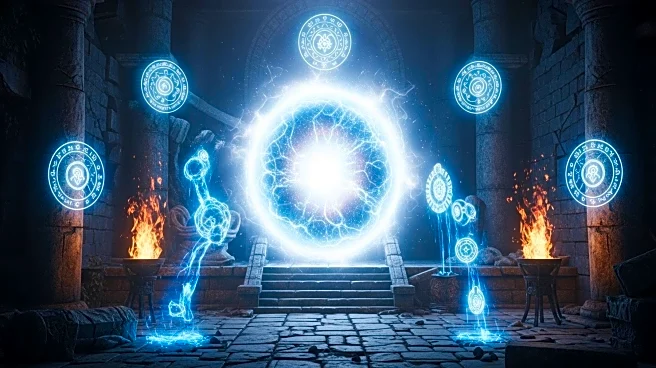What is the story about?
What's Happening?
The development of the video game Dishonored was initially perceived as chaotic by writer Austin Grossman, who joined the team with skepticism about the coherence of its dark, magical world. Grossman, known for his work on System Shock and Deus Ex, found inspiration in the Stephen Sondheim musical Sweeney Todd, which helped shape the game's tone. The game, set in the atmospheric city of Dunwall, features elements like audiograph players and the Outsider, a figure granting reality-bending abilities. Despite initial resistance to categorizing the game as steampunk, the team eventually embraced its unique style, contributing to Dishonored's success as a narrative-driven immersive sim.
Why It's Important?
Dishonored's development highlights the importance of creative influences in shaping video game narratives. By drawing from the dark humor and Victorian themes of Sweeney Todd, the game achieved a distinctive atmosphere that resonated with players. This approach underscores the potential for cross-media inspiration in gaming, enhancing storytelling and world-building. The success of Dishonored, with its immersive gameplay and narrative depth, demonstrates the impact of thoughtful design and collaboration among creative minds, influencing future projects in the industry.
What's Next?
The Dishonored series has expanded with sequels and DLC, continuing to explore its rich universe. The connection between Dishonored and Arkane's later game, Deathloop, suggests a shared world, offering new narrative possibilities. As the industry evolves, developers may continue to experiment with varied tones and settings, potentially revisiting the Dishonored universe with fresh perspectives. The ongoing collaboration between writers and developers could lead to innovative storytelling techniques, further enriching the gaming experience.
Beyond the Headlines
The integration of narrative design elements, such as the Heart in Dishonored, reflects the game's commitment to player choice and moral complexity. These features encourage players to engage deeply with the story, influencing the game's outcome based on their decisions. The balance between exposing narrative mechanics and maintaining immersion remains a challenge in game design, prompting ongoing discussions about the best approaches to storytelling in interactive media.
AI Generated Content
Do you find this article useful?














